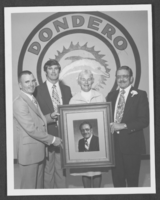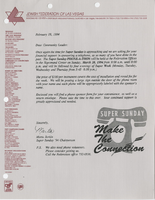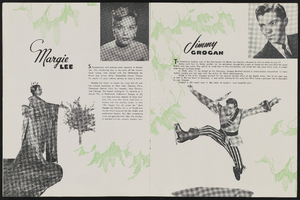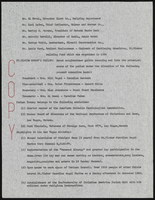Search the Special Collections and Archives Portal
Search Results
Robert MacKenzie Papers [UNPROCESSED]
Identifier
Abstract
This collection is unprocessed. See Access Note for additional information. The Robert MacKenzie Papers (approximately 1940-2000) contain the personal papers of Robert MacKenzie and materials documenting the long-term effects of atomic testing. The collection contains photographs, material documenting the Radiation Exposure Compensation Act deals, surveys about veterans and their children with diseases, letters and correspondence, audiovisual material, and original drawings and cartoons of ships drawn by MacKenzie. MacKenzie was stationed on a ship during Castle Bravo, the first in a series of high-yield thermonuclear weapon design tests conducted by the United States at Bikini Atoll, Marshall Islands, as part of Operation Castle.
Archival Collection

Louis Richardson interview, July 29, 2016: transcript
Date
Archival Collection
Description
As a youth, contractor Louis Richardson followed opportunities that would take him across the U.S. and to Sierra Leone, Africa. Originally from Charleston, South Carolina, Richardson attend Hampton Institute, in Hampton, Virginia, a historically black college/university (HBCU); there, he majored in construction and engineering and joined the Reserve Officers' Training Corps (ROTC). After graduation and U.S. Army service in Vietnam, he received an offer from U.S. State Department to teach young adults math and construction in West Africa. That experience led him to work for various Housing Authorities in New Jersey, Los Angeles, and finally, in 1978, to Las Vegas. In this interview, Richardson talks about how his early experiences shaped his vision of the types of projects he would undertake. He speaks about his focus on engineering how he came to Las Vegas and of the public works projects in schools, parks, and libraries that came to define his body of work. He explains the bid proces
Text

Photograph of Harvey Dondero, Kenny Guinn, and Helen Cannon, Las Vegas, Nevada, 1977
Date
Archival Collection
Description
Image

Film transparency of Armistice Day parade, Boulder City, Nevada, circa November 1939
Date
Archival Collection
Description
Image






